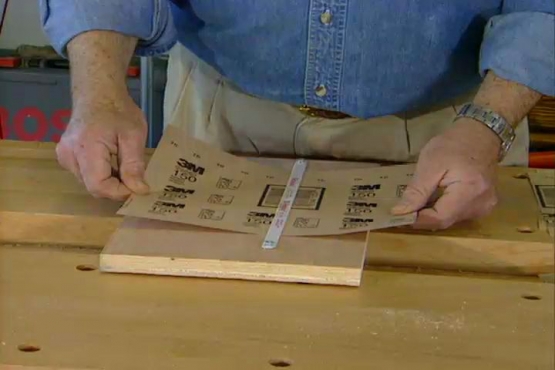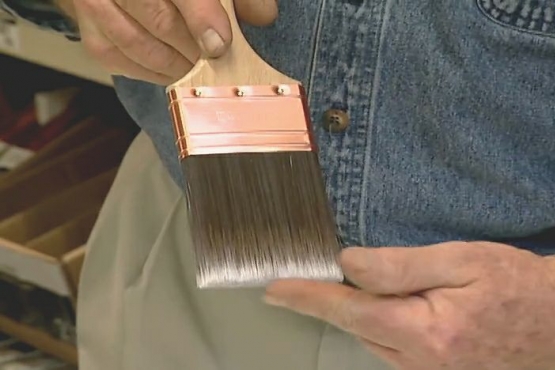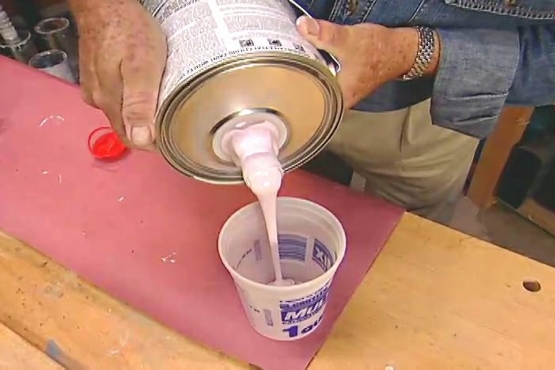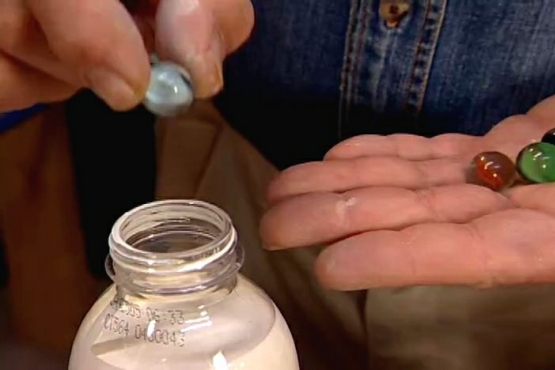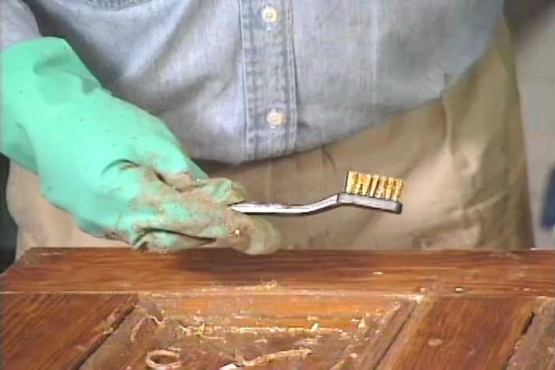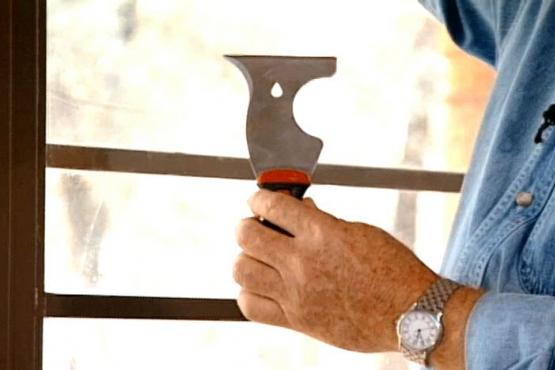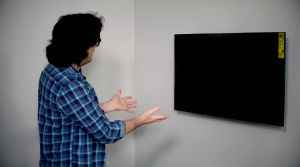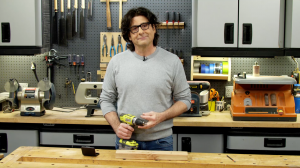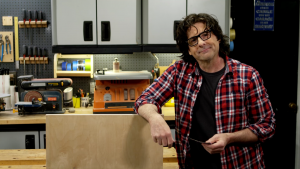RON HAZELTON:
Now when it comes to refinishing, you usually don't think of using water. But the fact is that all of these products over here: a sealer, stains and top coats, are water-based. Not only are they lower in toxicity and easy to clean up, but they can produce some really nice results.
Every top-notch finishing job starts with good surface preparation. When I'm hand sanding, I use 220 grit paper and move with the grain in straight, even strokes. Most of the time, though, I use a palm sander. It's fast and pretty much eliminates the risk of cross grain scratches.
A paper towel does a good job of picking up the last bit of sawdust. Before using the stain, I give it a good stirring to thoroughly distribute any pigment that may have settled to the bottom. A synthetic bristle brush is my tool of choice for applying this stain. Because the stain is water-based, I would avoid using a brush with natural bristles. I lay the stain on evenly, working with the grain.
A piece of cheesecloth or a soft cotton rag is ideal for wiping off the excess stain. On this side of the board, I'm wiping after five minutes. On the opposite side, I've waited 15 minutes before wiping. The longer the stain is left, the deeper the color.
Dry brushing is another technique. The brush picks up excess stain, which is then unloaded onto a cloth pad. This method creates a more opaque effect that can help conceal irregular woodgrain or color. Stains can produce a blotchy appearance in some soft woods like pine.
To avoid this, I often use a pre-stain conditioner. This water-based version partially seals the wood, enabling the stain to penetrate more uniformly and wipe off more evenly. Water-base stains dry quickly. In two to three hours, they are ready to top coat.
I usually half-fill a one-quart container so that I can gently tap the brush on the sides to remove excess material. I flow out the top coat in the direction of the grain. Whenever I can, I finish with long, straight, overlapping strokes, a technique called “striking off.”
In between top coats, I sand with 220-grit paper and dust thoroughly. When I'm finished, the cleanup will be soap and water. So for your next refinishing project, you might want to consider water. Cheers.
